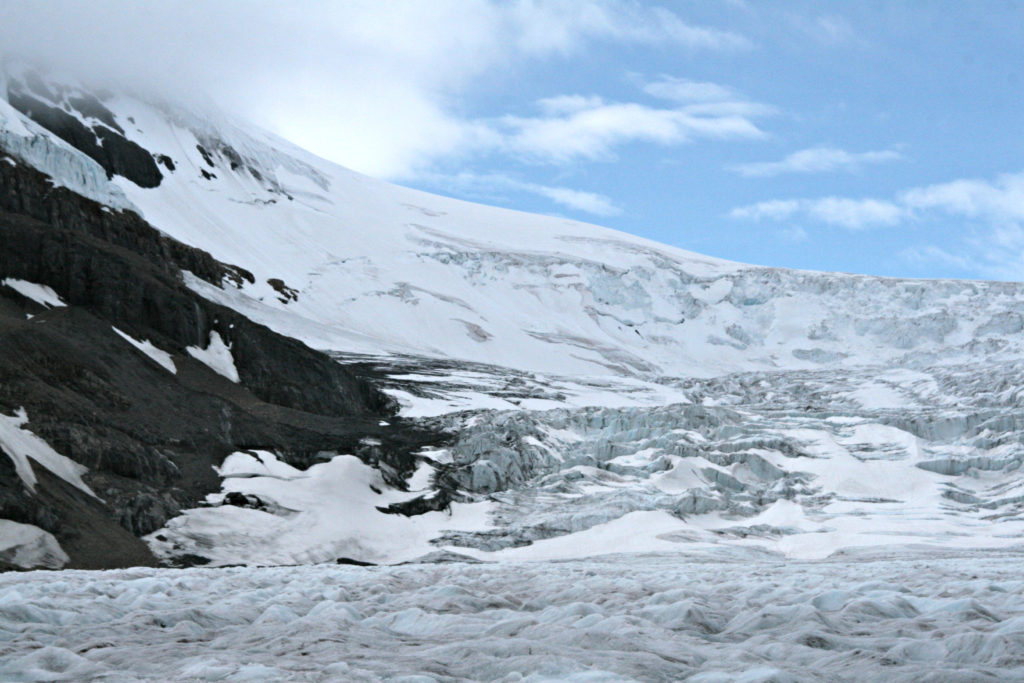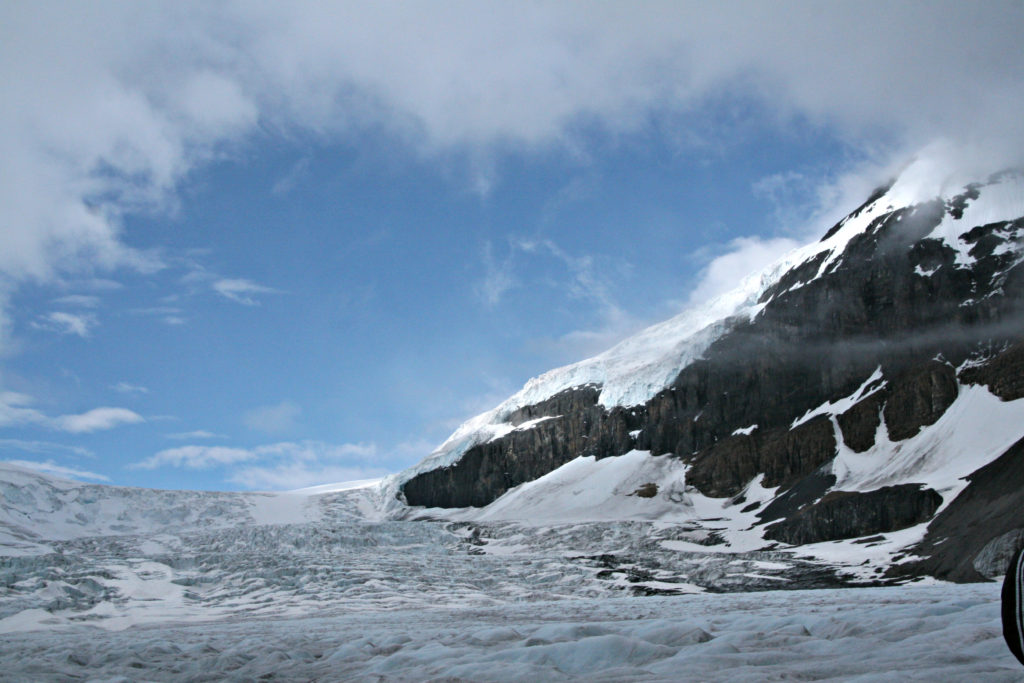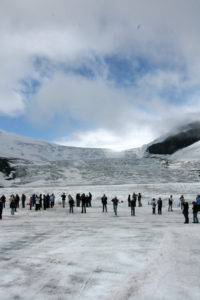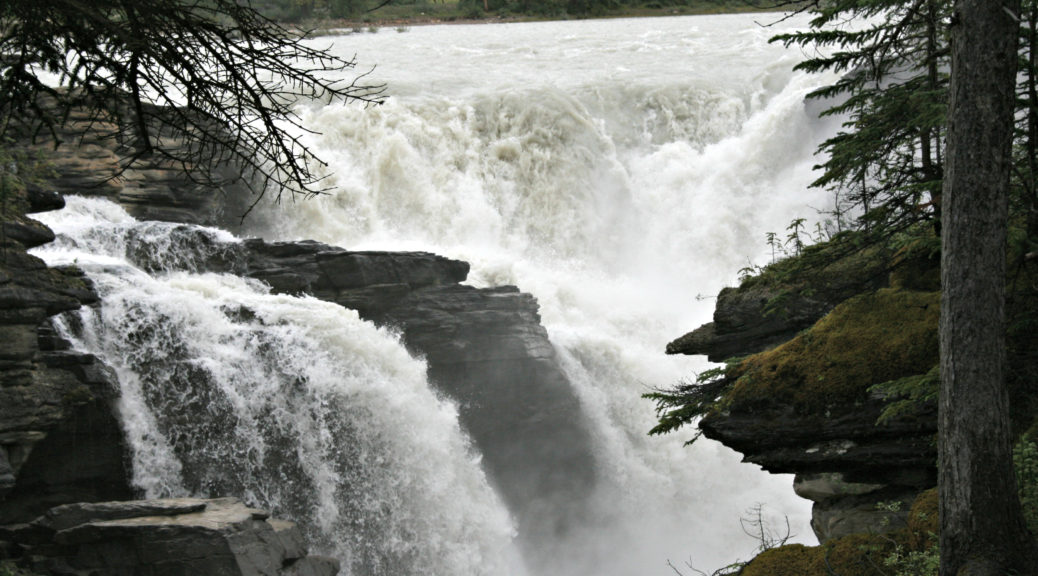
Athabasca Falls and the Columbia Icefield
The next night we would stay at Banff Springs Hotel. Along the way, our first stop was to see Athabasca Falls which is within Jasper National Park. Athabasca Falls is in the upper part of the Athabasca River – we had gone rafting on the lower part of the river during our stay in Jasper. While the water doesn’t have the greatest drop, it is considered a powerful waterfall because of the amount of water funneled through relatively narrow openings in the rock. The roar of the falls attests to this power. You can see the spray of water as it hits the rock. Erosion carved out softer limestone (compared to the upper layer of harder quartzite) forming a gorge beneath the falls. As I hope you can see from my pictures, Athabasca Falls is beautiful.
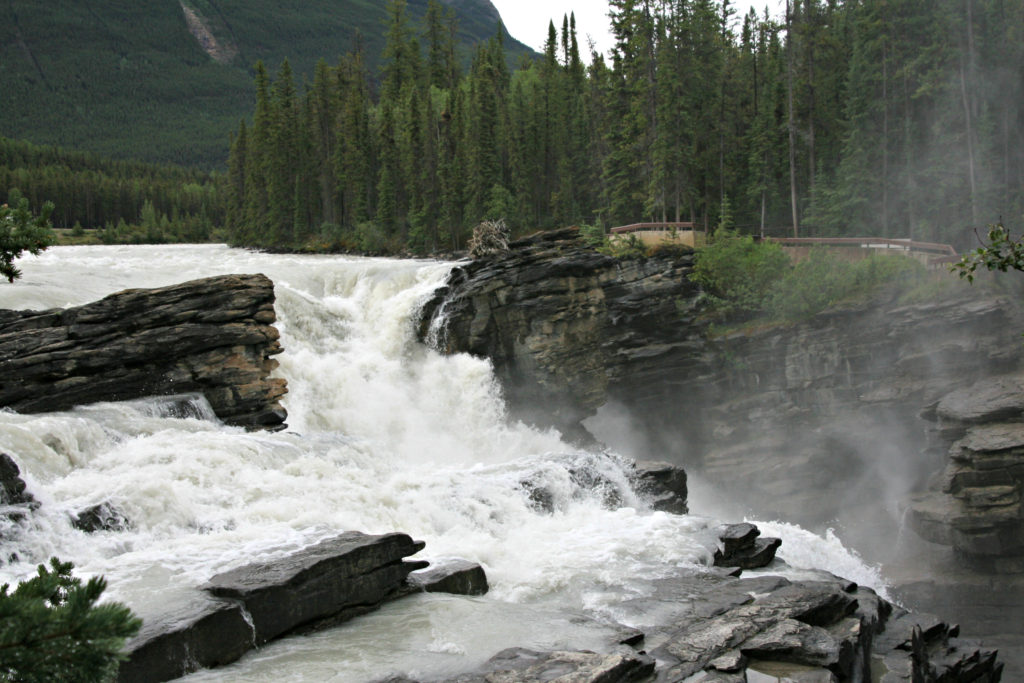

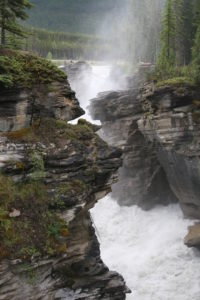

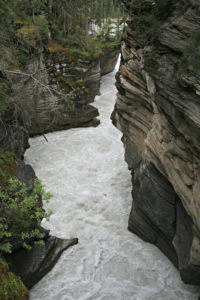
We next came to the Columbia Icefield. It is the largest non-polar icefield and the largest body of ice in the Rocky Mountains. We took a special vehicle called an Ice Explorer onto the Athabasca Glacier. The ice here is estimated to be 10,000 years old. The icefield is at the Continental Divide, the place where rivers on one side of the Continental Divide flow to the Pacific Ocean and those on the other to the Atlantic. The Continental Divide here is unique because rivers north flow toward the Arctic Ocean.
The Ice Explorer can be seen in the next picture. If you look at the woman standing near the front wheel, you will get a sense of the Ice Explorer’s size. In the second picture you can see why glaciers are sometimes called “rivers of ice.” Some of the pictures are ones I took as we traveled across the ice. There are also pictures of a glacier crevasse and glacier river.
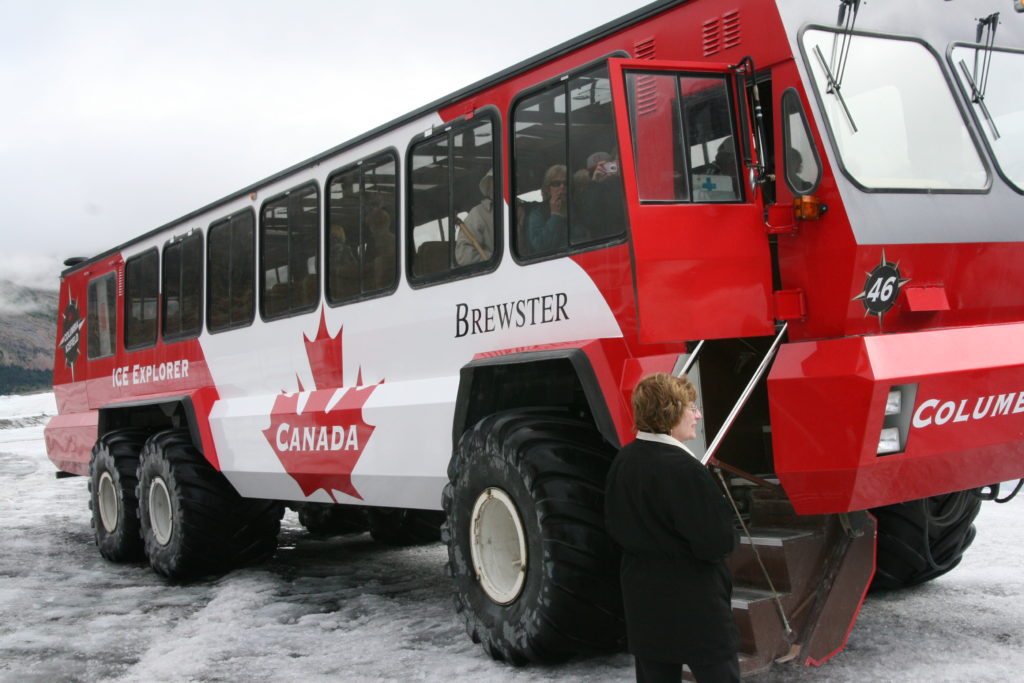
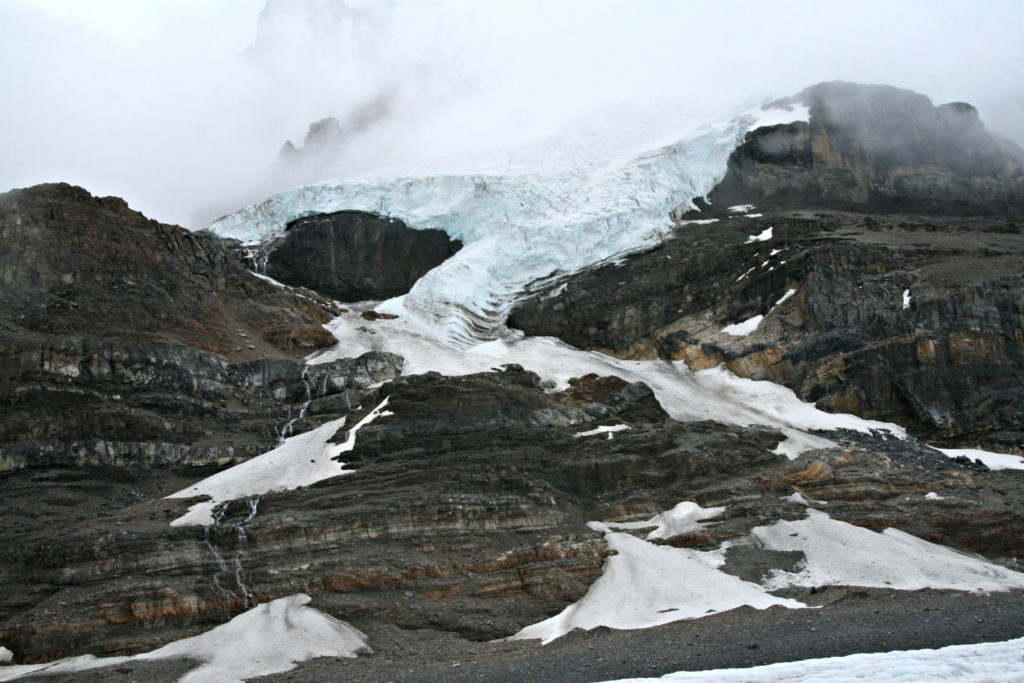

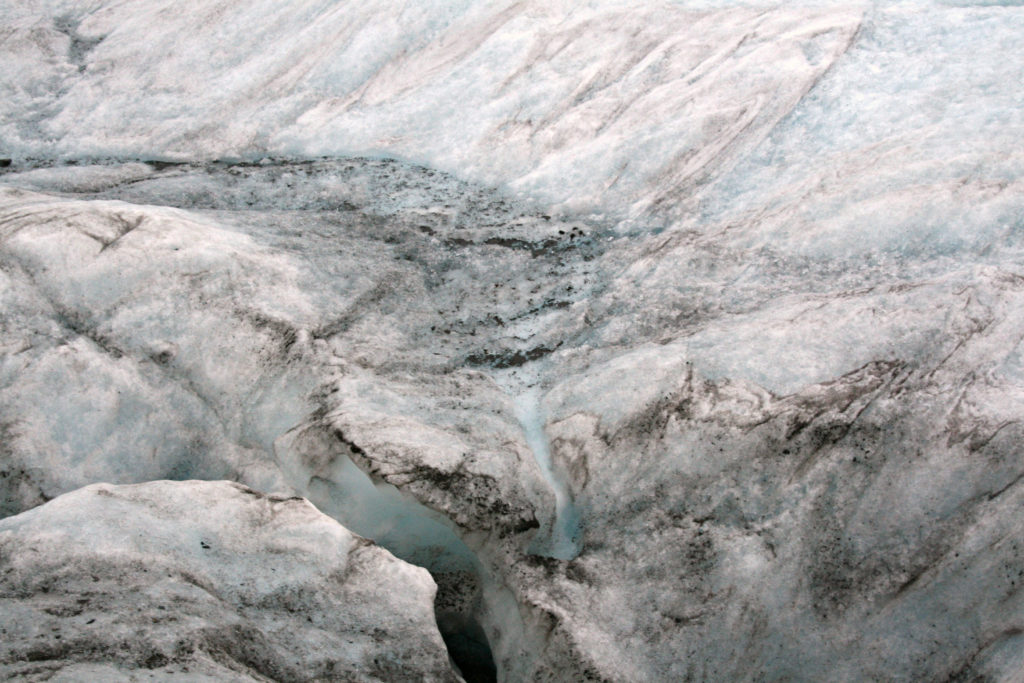
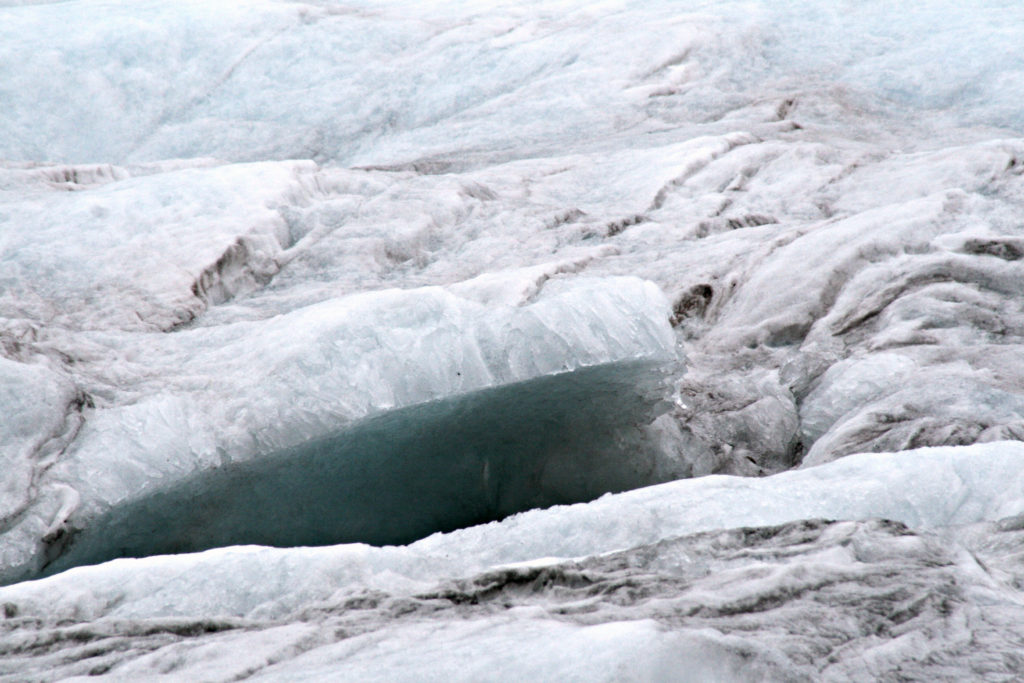
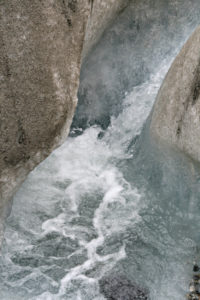
After we traveled across the ice for awhile, we were able to get out and actually walk on the glacier. The icefield itself feeds the Athabasca Glacier as well as seven others. The icefield is nearly 1,200 feet deep. If you would like additional information about the Columbia Icefield and the Athabasca Glacier, I would recommend you read the article found at http://earthsciencescanada.com/geovista/PDFs_en/vistas8_agci.pdf
In the pictures below, Mt. Andromeda lies to the west of the Columbia Icefield and Mt. Athabasca to the east. While it had been a little cloudy as we traveled to the Columbia Icefield, the clouds seemed to part giving us beautiful views. We were standing on the Athabasca Glacier looking toward the Columbia Icefield. After the Ice Explorer returned to our bus, I took some pictures looking back at where we had been. It gives you a good sense of the enormous size of the area.
We visited the Columbia Icefield in 2009. Since then, a Glacier Skywalk has been added. The Skywalk is described as a glass-floored observation platform. It is about 900 feet above the Sunwapta Valley. If you are not afraid of heights, it looks like it would be an exciting experience. If you would like more information, search for Glacier Skywalk and you will find advanced tickets available from a variety of sources.

